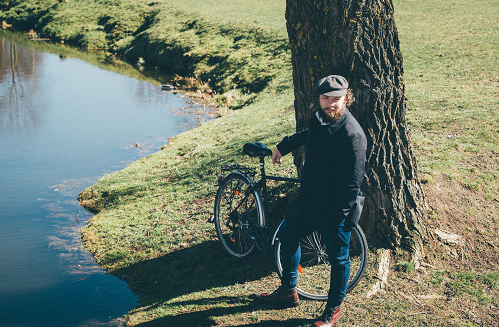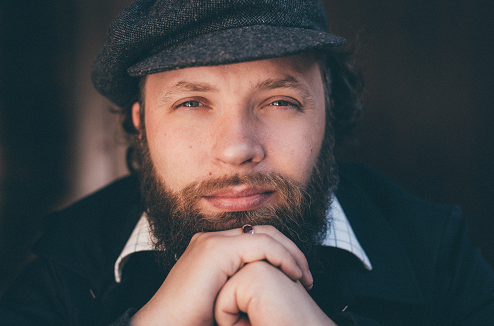基本信息
演出时间:2017年9月19日 19:45
演出地点:丝路剧院(西安市.莲湖路.洒金桥.古都印象文化园区内)
演出时长:以现场为准
入场时间:以现场为准
主办单位:中华人民共和国文化部/陕西省人民政府
承办单位:陕西省文化厅
注意事项
1. 演出详情仅供参考,具体信息以现场为准;
2. 1.2米以下儿童谢绝入场,1.2米以上儿童需持票入场。已购门票概不退换。
3. 演出票品具有唯一性、时效性等特殊属性,如非活动变更、活动取消、票品错误的原因外,不提供退换票品服务,购票时请务必仔细核对并审慎下单。
特别提示
温馨提示:本剧目所在演出场馆配有自助取票设备,用户可提前在网上订购后到达该演出场所直接取票入场,省心又便捷哦~
线下售票网点:西安市南稍门中贸广场15楼1单元1904
营业时间:周一到周五9:30-18:00
温馨提示:上门购票前请先致电客服中心查询票品可售情
支付说明:支持现金支付、微信支付、惠民卡支付(其他支付方式暂未开通)请您谅解!
咨询电话:4008-0365-33(周一至周五9:30-18:00) 029-87575134(周六至周日10:00-17:30)
项目详情
演出单位:立陶宛Saulius Petreikis 和他的乐团
演出地点:丝路艺术剧院(9月19日),西安音乐学院音乐厅(9月20日)
演出时间:9月19日-20日
团介:
Saulius Petreikis是一位弘扬世界音乐的立陶宛多乐器演奏家,毕业于立陶宛音乐和戏剧学院。Saulius擅长世界各地乐器演奏:印度的班苏里竹笛,中国的葫芦丝和笛子,希腊的floghera,南北美洲和尼泊尔的长笛,爱尔兰和苏格兰的长笛,波斯的奈伊笛,亚美尼亚的杜读管和唢呐等等,是一位世界优秀的音乐家。
音乐会《低洼之地》,独具特色,融合了流行音乐、古典音乐、民俗风情、爵士乐以及世界音乐等各个元素。其音乐创造了一种温暖舒适的氛围,很多歌曲都具有凯尔特风格,同立陶宛传统声音完美结合在一起,丰富了异国乐器的音色。该节目向读者展示了多层含义。其中之一——萨莫吉提亚——西立陶宛的民族区域,也是Saulius的家乡。从更广泛的意义上说——低洼地区、平原以及溪谷,是我们每个人的根基。就像是鸟儿在栖息的树枝上歌唱一样,来自不同国家不同乐器的声音优美地融合在一起。
节目单:
我们来自立陶宛,那里没有山,只有大片的森林、湖泊和99公里的波罗的海海岸线。我所有音乐的灵感都源自一个名为“Lowlands”的小地方,而后将音乐传播到世界各地。
- 《村庄》
这是一个立陶宛的小村庄,每天早晨,阳光如约而至,每个人在田野上劳作,但他们不走路,而是跳舞。美妙的音乐将观众带入15世纪的立陶宛。
- 《在酒吧里》
这首曲子来自凯尔特风格,将带来快乐和舞蹈。
- 《Bite Lingo》
在立陶宛,Bite是一种蜜蜂。蜜蜂不仅是一种简单的昆虫,在古代立陶宛,蜜蜂是一种神圣的小动物,是生命圈的“起源者”。这个作品中,主要乐器是bansuri长笛(印度)、覆盖琥珀的立陶宛山羊角,以及来自中国的可爱长笛。如果观众和音乐家一起唱这两个词“bite lingo……”,那么,就会得到创造一种巨大的魔力,带动整个生命圈的运转。
- 《Inis Oirr》
现在,每个人都在一个非常小而美丽的岛屿“Inis Oirr”上生活,这里有仙女和自由飞行的精灵,极具魔幻色彩。在这里,观众可以欣赏独奏小提琴, Saulius Petreikis演奏爱尔兰长笛——锡口笛。
- 《杜读管》
来自爱尔兰的仙女将观众带到高加索地区,乐器杜读管提醒着人们,这里有一些不为人知的“神秘土地”。杜读管的演奏就像一个男人的哭声。
- 《巴尔的摩,你好》
这个作品带领观众来到严寒的北海,在那里,渔民和水手快乐地跳舞。
- 《葫芦丝摇篮曲》
Saulius收集了来自世界各地的大量乐器,其中最有趣和多彩的是葫芦丝。
- 《Duende》
伊朗热烈而迷人的呼吸。Saulius Petreikis演奏长笛奈依笛,Donatas Petreikis演奏萨克斯。
- 《Vaka》
这首乐曲非常独特,运用特殊的立陶宛方言,展示了一个美妙的世界:孩子们的梦想中充满阳光,他们在田野中尽情地跑步和飞越。
- 《祈祷》
一首风格强烈且充满信仰的曲子,表达了无论任何情况,都坚持真理的信仰。
- 《飞行》
我们纵情飞向我们的家园,那里有我们的思想,我们的灵魂。这里,采用一种立陶宛的民间乐器——Lumzdelis。
音乐家列表:
Saulius Petreikis——作曲家、专业乐器演奏家,以及欧洲少数几位乐器收藏家(收集了来自世界各地的独特乐器),并且,运用这些乐器,进行艺术创作和演奏。Saulius录制了7首独特的音乐专辑,并参加了30多个其他音乐家的专辑的制作。在音乐会上,Saulius演奏小号、班苏里竹笛、爱尔兰长笛、口哨、杜读管、古典长笛、葫芦丝、山羊角、lumzdelis,并配合清唱。
Donatas Petreikis——Saulius的兄弟,但首先是在丹麦研究和演出的专业萨克斯管和吉他手。
VytautasMikeliūnas——专业小提琴演奏家、音乐编曲家和着名的音乐表演者,曾在立陶宛和欧洲的几场学术音乐比赛中荣获奖项。
MindaugasBalčiūnas——钢琴家和键盘手,在立陶宛被誉为“流行爵士音乐演奏家”。
Andrius Daugirdas——立陶宛非常着名的流行爵士乐低音吉他手,总统管弦乐队工作。
Andrius Kairys——流行爵士乐和民间音乐家以及专业鼓手。
音响师:
Giedrius Ūsas——专业音响师。
艺术家/艺术团体简介
Saulius Petreikis – one of the few people in Europe who has a unique collection of musical instruments from all over the world and is using them to create and perform his own music. Although Saulius studied classical trumpet in Klaipėda’s Stasys Šimkus Conservatory (2001-2004) and Lithuanian Academy of Music and Theatre (2004 – 2010) also played in brass band „Trimitas“ (2006 – 2008), but for the last ten years he is genuinely exploring the World Music.
While playing music he connects light-playfulness and deep sincerity, spontaneous expression, and inclination to a synthesis of different styles. Saulius professionally plays various wind instruments from all over the world; he can skilfully handle classical and Indian bansuri, Chinese hulusi and dizi, Greek floghera, North and South American, Nepalese flutes, Irish and Scottish flutes, Persian ney, Armenian duduk and zurna, Slovakian fujara, Italian, South American and Hungarian ocarina, Australian didgeridoo, Caribbean shells, Slovakian whistle (svilpa), harmonicas. He can also play Hawaiian ukulele, African kalimba, shekere, djembe, and is practicing Tuvan guttural singing or Tibetan overtone chanting. Raised in a family of folk musicians, of course Saulius pays a lot of attention to Lithuanian folk music – he plays various horns, whistles (švilpynė), reed-pipes (birbynė), panpipes (skudučiai), lumzdeliai, Pentecost horns and kanklės. Saulius Petreikis is always looking for new sounds, is daring to experiment and improvise, that‘s why many masters from diverse countries are constantly giving him compliments for a rapid improvement in playing. He was learning the secrets of Eastern wind instruments from Armenian, Persian and Indian players: Djivan Gasparian, Muhammad Rasouli, Nadaprem (Ernest Japifanov).
Saulius Petreikis is a colourful musician, who differs every time according to the audience and the space where he plays. In all the countries audiences appreciated him as an extraordinary original performer and composer. Saulius Petreikis collaborates with different Lithuanian and foreign artists, not only musicians, but dancers, actors and directors too. He is also creating music for theatre performances. The most important thing that Saulius shares his knowledge and gives an incredible educative lectures about world instruments for children and adults in all over the world.
剧目简介
Instrumental music of Saulius Petreikis is distinctively combined elements of pop, classical, folklore, jazz and world music. Metaphoric roots of his sound – sacred place from which rises the mythical stem of the World Tree. Like the singing of birds on its branches, voices of various instruments from different countries are heard mingling gracefully together. They create an original harmony of timbres and styles, revealing lucid and bright entirety of the sound to the listener.
The new solo project of Saulius Petreikis is made in Scotland together with „The Unit 7 Allstars“ pulses in rhythms of Irish jig, blows a gust of unconstrained playfulness, which is later replaced by a lament of duduk or tragic story of werewolf and its love.
Lowlands – program of Saulius Petreikis, which distinctively combines elements of pop, classical, folklore, jazz and world music. Program consists of 10 compositions: 8 instrumental pieces and 2 songs sung in English and Samogitian languages. Saulius’ music creates a warm and cozy atmosphere and will fit for the wide variety of listeners. Many songs in the program has a characteristic Celtic sound, going beautifully together with Lithuanian traditional sounds and enriched in timbres of exotic instruments. Symbolic title of the program suggests many meanings to the listener. One of them – Samogitia – ethnographic region in Western Lithuania, where Saulius himself comes from.In a broader sense – lowlands, plains and vales where the roots of each one of us comes from. That’s the sacred place where the mythical stem of World Tree rises from. Like the singing of birds on its branches, voices of various instruments from different countries are heard mingling gracefully together. They create an original harmony of timbres and styles, revealing lucid and bright entirety of the sound to the listener.
Program starts with panpipes playing Lithuanian traditional sutartinė, which later mingles with trumpet and trombone syncopes and evolves to a dreamy melody of reed-pipe (1); piece is titled as the whole program – “Lowlands”. Second composition – “Eyes“ pulses in the rhythm of Irish jig and blows a gust of unconstrained playfulness (2). Lyric contrast is created by the wistful duduk melody in the background of the strings; this piece is dedicated to Caucasus (3). One of the brightest song in the program – instrumental piece “Beautiful Girl”, revealing timbral expression possibilities of bansuri, Indian bamboo flute (4). Anxious, starting with an impetuous unison, the fifth piece “Classical” later emerges to a polyphony of trumpet, duduk and guitar (5), succeeded by a wide and bright melody of the piece called “Hornpipe” (6). Lyric centre of the program – ballad “Werewolf” is a story of the tragic love between a werewolf and a girl (7). “Ney” – vivid and rhythmical composition played with a Persian long flute –ney, has characteristic Iranian color and leads us to a kingdom of tales from Arabian Nights (8). Irish flute, guitar and piano sounds blend together in the ninth piece “Friendship” and create a warm and cozy impression (9). The closing track of the program is a Lithuanian one, sung by Saulius and his brother Donatas in their home dialect – Samogitian.
Musicians:
Saulius Petreikis - composer, professional wind instruments player, and one of the few people in Europe who has a unique collection of musical instruments from all over the world and is using them to create and perform his own music. Saulius has recorded his 7 unique music albums and has participated in more than 30 albums of other musicians. In the concert Saulius will play trumpet, bansuri, Irish flute, whistle, duduk, classical flute, hulusi, goat horn, lumzdelis, voice.
Donatas Petreikis - Saulius brother, but first of all a professional saxophone and guitar player at the moment studying and performing in Denmark.
Vytautas Mikeliūnas - professional violin player, music arranger and well known academic music performer, who has won several academic music contests in Lithuania and Europe.
Andrius Daugirdas - a very well known pop jazz bass guitar player in Lithuania also working in a Presidential Orchestra.
Sound engineer:
Giedrius Ūsas - a professional sound engineer.
Saulius Petreikis——少有的收集世界各地乐器的欧洲人,用收集来的乐器创作和表演有自己风格的音乐。尽管Saulius在Klaipėda's Stasys Šimkus Conservatory(2001—2004)和立陶宛音乐和戏剧学院(2004—2010)学习古典小号,在Trimitas(2006—2008)吹奏乐队演出,但直到最近10年他才真正开始探讨世界音乐。
演奏音乐时,他会将活泼快乐、深深地诚意以及自然表达融为一体,倾向于不同风格的融合。职业上,Saulius会演奏世界各地的各种吹奏乐器;能够娴熟地演奏古典和印度的班苏里竹笛、中国的葫芦丝和笛子、希腊的floghera、南北美洲和尼泊尔的长笛、爱尔兰和苏格兰的长笛、波斯的奈伊笛、亚美尼亚的杜读管和唢呐、斯洛伐克的fujara、意大利、南美洲和匈牙利的陶笛、澳大利亚的迪吉里杜管、加勒比的贝壳以及斯洛伐克的哨子(svilpa)和口琴。同样会演奏夏威夷的尤克里里琴、非洲的克林巴琴、葫芦石和金杯鼓,也正在练习图瓦语喉音演唱或西藏泛音颂唱。出生于民间音乐家庭,Saulius同样关注立陶宛民间音乐——演奏各种号角、口哨(švilpyn)、芦笛(birbyn)、排箫(skudučiai)、lumzdeliai、五旬节号角和kankl。Saulius Petreikis总是期待着新的声音,敢于尝试和即兴创作,因而其他国家的大师总是对其演奏方面的快速提升大加赞赏。他从美国、波斯和印度的演奏者Djivan Gasparian、Muhammad Rasouli和Nadaprem(Ernest Japifanov)那里领悟到东方吹奏乐器的神奇之处。
Saulius Petreikis是一位极富色彩的音乐家,他会根据观众以及演奏空间的不同做出不同的调整。在各个国家,观众们都将他视为一位杰出的原创型表演者和作曲家。Saulius Petreikis同不同的立陶宛和外国艺术家合作,合作人员范围不仅限于音乐家,还包括舞蹈家、演员以及导演。他还为剧院表演创作音乐。最重要的事情是,他会与世界各地的儿童和成年人分享有关世界乐器的知识,为他们上一堂别开生面的教育课程。
剧目简介
Lowlands——Saulius Petreikis的这一节目,独具特色,融合了流行音乐、古典音乐、民俗风情、爵士乐以及世界音乐的各个元素。该节目包括10首作品:8首位器乐作品,2首英语和萨莫吉提亚语演唱的歌曲。Saulius的音乐创造了一种温暖舒适的氛围,将会适多数类型的听众。其中很多节目歌曲都具有凯尔特风格,同立陶宛传统声音完美结合在一起,丰富了异国乐器的音色。该节目的象征性的主题向读者展示了多层含义。其中之一——萨莫吉提亚——西立陶宛的民族区域,也是Saulius的家乡。从更广泛的意义上说——低地区、平原以及溪谷,是我们每个人的根基。那正是世界树神秘主干产生的神圣之地。就像是鸟儿在栖息的树枝上歌唱一样,来自不同国家不同乐器的声音优美地融合在一起。他们创造了一种音色和风格的原始和弦,向听者展示了声音清澈明亮的整体性。
首先是排箫演奏的立陶宛传统节目sutartinė,后与小号和长号的声音混合在一起,然后转换为牧笛的如梦旋律。(1);作品主题名称与整个节目一致—“Lowlands”。第二首作品—“眼睛”,以爱尔兰吉格舞为节奏,带来一股无拘无束自由活泼快乐之风(2)。在弦乐器背景中,富有沉思感的杜读管旋律 产生一种情感对比;该作品献给高加索(3)。项目中最轻快的节目之一——乐器作品“漂亮姑娘”,揭示了班苏里笛——印度竹笛音色表达的可能性(4)。第五首“古典”是焦虑的,以强劲的齐唱开头,后转为小号、杜读管和吉他的复调(5),然后是“角笛舞曲”,一首宽广而轻快的旋律(6)。节目抒情部分集中于——歌谣“狼人”讲述的是一个狼人同一个女孩之间的悲剧爱情故事(7)。“奈伊笛”——用一种波斯长笛—奈伊笛演奏的生动而富有节奏的作品,具有伊朗特色,带领我们进入《一千零一夜》传说中的王国(8)。爱尔兰长笛、吉他和钢琴的声音在第九部作品“友谊”中相互融合,创造了一种温暖舒适的氛围(9)。项目的结束节目是由Saulius及其兄弟Donatas用其家乡方言——萨莫吉提亚语言演唱的立陶宛歌曲。
剧照:




